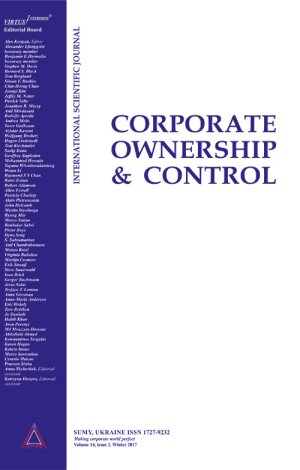
-
 Journal menu
Journal menu

- General information
- Editorial Board and External Reviewers
- Journal Policies
- Publication Ethics and Malpractice Statement
- Instructions for authors
- Paper reviewing
- Article processing charge
- Feedback from stakeholders
- Journal’s Open Access statement
- Order hard copies of the journal
- 50 most cited papers in the journal
PYRAMIDING EFFECT ON FIRM’S INVESTMENT DECISION AMONG MALAYSIAN DISTRESS COMPANIES
Download This ArticleAbstract
It is documented by La Porta, Lopez and Shleifer (1999) that ultimate owners, around the world usually control an array of affiliated companies through hierarchical intermediary corporations forming a Pyramidal Ownership Structure. A direct result of this pyramidal ownership structure is divergence of cash flow rights from control rights in the hand of the largest shareholders (Claessens, Djankov and Lang 2000). This paper investigate the impact of this separation of cash flow rights from control rights resulting from this pyramidal forms of ownership structure on firm’s investment decisions. In particular, our objective is to examine whether such separation affects the investment decisions among Malaysian listed distress Companies. Our findings lends support to the over investment problem, where by the separation of cash flow rights and control rights have led to the increase of inefficient investment among the distress companies. The main source of financing for this inefficient investment activity is the firm’s retained earnings. Consequently, the exploitation of such firm’s resources in order to finance these inefficient investment activities of the ultimate owner’s then lead to negative market valuation.
Keywords: Corporate Control, Ownership, Pyramidal Structures
How to cite this paper: Nor, F. M., & Bany-Ariffin, A. N. (2005). Pyramiding effect on firm’s investment decision among Malaysian distress companies. Corporate Ownership & Control, 3(1-1), 163-172. https://doi.org/10.22495/cocv3i1c1p5

















